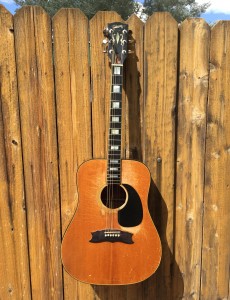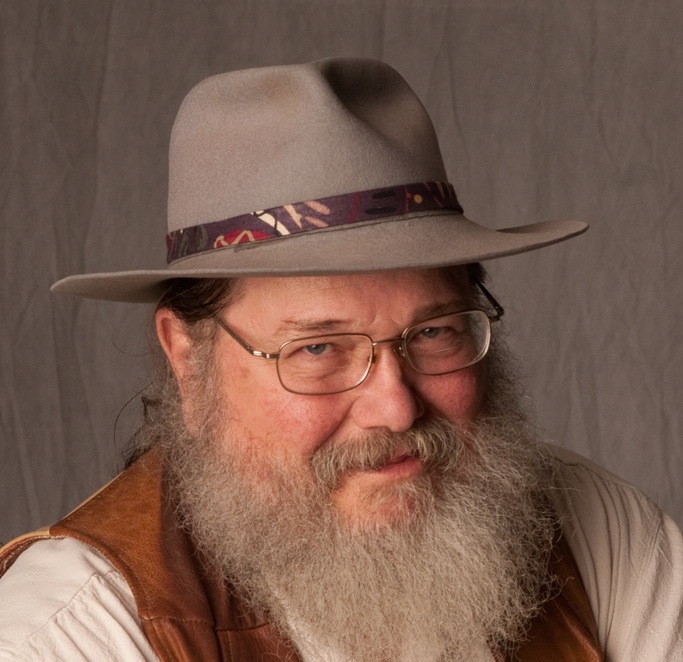 I sat in the dim room with a group of early risers and watched my son’s performance. He had the first slot in the folk festival. On his knee rested a 1976 Gibson Heritage guitar. It had seen better days. Although it wasn’t visible to the audience, I knew there was the scar of a repaired crack where the peg head meets the neck.
I sat in the dim room with a group of early risers and watched my son’s performance. He had the first slot in the folk festival. On his knee rested a 1976 Gibson Heritage guitar. It had seen better days. Although it wasn’t visible to the audience, I knew there was the scar of a repaired crack where the peg head meets the neck.
As my son worked his way through a country blues number, I let the Gibson take me back in time on a ribbon of sweet tone. I was living in Rapid City, S.D., on a hillside in the shadow of a couple of giant concrete dinosaurs. My house was located between the Old Home Bakery and Black Hills Meat Packing, where I worked. Depending on wind direction, if you sat on my front porch it smelled like “Mom’s home” or “Hell’s own abattoir.” One day as I headed home from work I stopped off at a second-hand furniture store. I spied a guitar case on a table and I investigated. Inside was a brand new Gibson Heritage, a model I was not familiar with but it was nicely inlaid and appointed. When I took it out to examine it I saw it had the classic headstock crack that comes when a guitar is leaned against the wall and it falls. The clerk who had been busy with another customer saw me and said “That’s not for sale; I just bought it at a yard sale for my husband.”
“Did you realize the neck is broken?” I said. She was distraught and explained she thought she had purchased a sound instrument. I looked at the $75 sticker still attached and I offered to give her what she had paid for it. She was happy; I was ecstatic. I performed the repair myself.
This was my first quality guitar. For decades it was my introduction to new places and friends. For a moment I flashed on the jam sessions and performances where the guitar had been my companion. I remembered learning “Wild Horses” in a little shack in Blackhawk, S.D., and leading worship in the wild charismatic church we attended. I saw again the man who played mandolin and drove around town on a scooter with his dog on the back, and taught me to play “Blackberry Blossom.”
When we relocated to Kentucky several years later the Gibson came along. We moved seven times in two years. Sue was making moving trips one day while I was at work and she placed the guitar case on top of a load where it enjoyed the full power of the sun. The next time I opened the case I found the oversized carved ebony bridge had split and slid across the face of the guitar. This repair was beyond my skills, so I shipped it to my friends Nowell and Jennifer Creadick at Hill Violin and they crafted the perfect replacement that still serves so well today.
I’ve never been a collector of guitars like some of my fellow pickers, and the little Gibson was my only instrument until the early ’90s when I acquired my Martin D-35 here in Flagstaff. It wasn’t being played so I passed the Gibson on to my son. It was in his unlocked van one night when he went to bed, but it was missing the next morning. Seven years meandered along. My son took a different guitar into the local repair shop for a tune up and low and behold he spied on the work bench, the little Gibson. I was working on the train when I got his excited call asking me if I could identify the guitar as mine to the satisfaction of the repairman. I was able to describe several unique repairs and marks that convinced the shop owner and ultimately the person who brought in the guitar, of our ownership. The current possessor had just purchased it on the street for a $100. We reimbursed him and the Gibson came home to stay.
The guitar had been played—a lot. Now I’m hard on a guitar, but this was impressive. The top sported a constellation of dents and dings and several cracks, and above and below the pick guard the vigorous slashing of the pick had worn through the finish to the raw wood beneath. But the balanced sweet tone and the clear voice were still there.
 Several years ago I took the Martin to Bill Burke, my music partner for 30-plus years and a respected luthier to have a loose brace repaired and he suggested that I anticipate retiring the fragile guitar one day soon. He offered to build me a custom instrument fitted to my style and needs. I began making payments toward that day and he began construction several weeks ago. The body will be “dreadnaught” size and style. We selected desert mesquite for the sides and back. Mesquite is a very dense and hard wood, and he is able to work with thinner boards than if it were rosewood or mahogany. The top is Appalachian red spruce which is the same wood Martin used on their pre-war guitars. Bill had a lovely piece of perfectly quarter sawn cherry that was nicely figured that he is carving the neck from. I asked for a 12-fret neck just because I wanted one. The fingerboard will be ebony with pearl inlays. I have had the pleasure of checking on the progress every few days and documenting it with photographs. In just a few weeks I will have a new guitar, a passport to new exciting adventures and charming companions. Thank you Bill Burke. And play on sweet Gibson.
Several years ago I took the Martin to Bill Burke, my music partner for 30-plus years and a respected luthier to have a loose brace repaired and he suggested that I anticipate retiring the fragile guitar one day soon. He offered to build me a custom instrument fitted to my style and needs. I began making payments toward that day and he began construction several weeks ago. The body will be “dreadnaught” size and style. We selected desert mesquite for the sides and back. Mesquite is a very dense and hard wood, and he is able to work with thinner boards than if it were rosewood or mahogany. The top is Appalachian red spruce which is the same wood Martin used on their pre-war guitars. Bill had a lovely piece of perfectly quarter sawn cherry that was nicely figured that he is carving the neck from. I asked for a 12-fret neck just because I wanted one. The fingerboard will be ebony with pearl inlays. I have had the pleasure of checking on the progress every few days and documenting it with photographs. In just a few weeks I will have a new guitar, a passport to new exciting adventures and charming companions. Thank you Bill Burke. And play on sweet Gibson.

